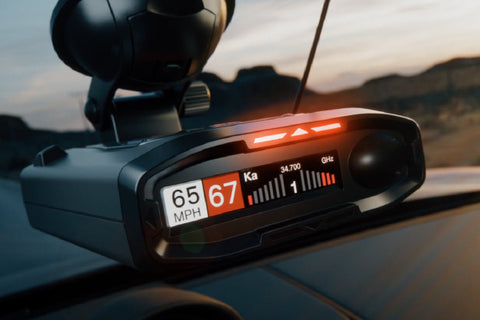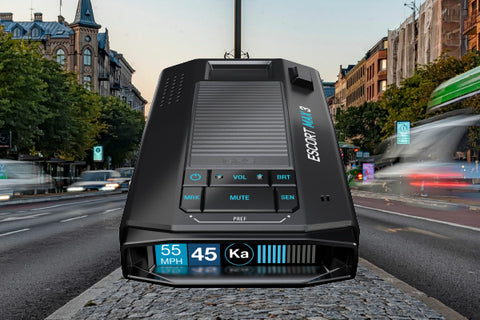Related Articles:
Top 3 Things to Look for in a Radar Detector in the UK
Navigating the UK's intricate network of roads, where speed cameras and traffic enforcement are an ever-present...
Read More3 Reasons to Use a Radar Detector in the UK: Drive Smarter, Safer, and Worry-Free
In the fast-paced world of driving, staying one step ahead of potential speed cameras, mobile speed...
Read MoreWhat Are Radar Detector Bands?
Detection Range Explained
In the world of radar detectors, one crucial aspect that every driver should understand is detection range. Detection range refers to the maximum distance at which a radar detector can pick up and alert the driver about a radar signal. In the United Kingdom, where speed enforcement technology is on the rise, knowing your detector's detection range can be the difference between avoiding a speeding ticket and being caught off guard. In this article, we will delve into the factors that influence detection range and why a longer range is an asset for drivers on UK roads.
Understanding Detection Range

Before we explore the factors affecting radar detector detection range, let's first explain what detection range means. Detection range is essentially the radar detector's ability to sense radar signals from law enforcement devices such as speed cameras and police radar guns. A longer detection range allows drivers to receive alerts well in advance, providing them with more time to adjust their speed, potentially avoiding speeding fines and ensuring safer driving.
Factors Influencing Detection Range

Strength of the Signal
The strength of a radar signal plays a pivotal role in determining the detection range. Law enforcement radar devices emit signals with varying strengths. A high-quality radar detector with advanced technology can detect weaker signals at longer distances. This is particularly vital in the UK, where many radar devices used by police may emit weaker signals to avoid detection.
Terrain
The geographical landscape plays a significant role in the effectiveness of radar detectors. In urban areas with tall buildings and numerous obstacles, radar signals can be easily blocked or reflected, reducing the detection range. In contrast, on open motorways and rural roads, radar signals can travel unimpeded, allowing for longer detection ranges.
Weather Conditions
Adverse weather conditions can impact radar detector performance. Rain, fog, and snow can absorb or scatter radar signals, reducing the detector's range. High-quality radar detectors often come equipped with features to minimise false alerts caused by weather conditions.
Sensitivity and Quality of the Detector
The sensitivity and overall quality of the radar detector itself are crucial factors. High-end detectors are designed to be more sensitive, capable of detecting signals from greater distances. They also come with advanced filtering systems that reduce false alarms and increase the accuracy of alerts.
Why Detection Range Matters in the UK

In the United Kingdom, the prevalence of speed cameras and mobile speed enforcement units has made radar detectors an essential tool for many drivers. A radar detector with a longer detection range can provide early warnings, allowing drivers to reduce their speed well before they reach the enforcement point. This not only helps drivers avoid costly fines but also contributes to safer roads and responsible driving practices.
Selecting the Right Detector for UK Roads
When shopping for a radar detector in the UK, consider your specific driving needs and opt for a detector with advanced technology, superior sensitivity, and reliable signal filtering capabilities. Investing in a high-quality radar detector with an extended detection range can be a valuable asset for any UK driver, providing peace of mind and protection against speeding tickets.
In the realm of radar detectors, understanding detection range is paramount for UK drivers. With the increasing use of speed cameras and police radar, having a radar detector with a longer detection range can be the difference between a smooth, violation-free journey and unexpected fines. By considering the factors that influence detection range and investing in a quality detector, drivers in the UK can enhance their road safety and avoid the pitfalls of speed enforcement measures.
Related Articles:
Top 3 Things to Look for in a Radar Detector in the UK
Navigating the UK's intricate network of roads, where speed cameras and traffic enforcement are an ever-present...
Read More3 Reasons to Use a Radar Detector in the UK: Drive Smarter, Safer, and Worry-Free
In the fast-paced world of driving, staying one step ahead of potential speed cameras, mobile speed...
Read More |
| 

